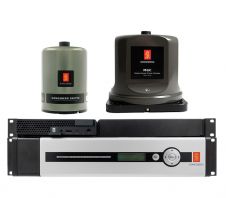Earth Sciences and the Aquaculture Industry
The fast development of the aquaculture industry in Chile over the last decade has meant several undesirable effects on the environment and territorial organisation. This industry is producing revenues of over US$ 1,000 million per year and has transformed the economy of three of the largest regions in the country, from latitude 40° S. to the surroundings of Cape Horn. It is difficult to find unemployed people in this region.
The country has become the second largest salmon producer in the world, preceded only by Norway. Several unpredicted effects of this industry have had an impact upon the environment due to lack of adequate organisation of maritime territories moving in harmony with other productive activities.
Thoughts of having prepared an adequate cartographic base before the start of the aquaculture thrust were not realistic twelve years ago without postponing the start of an industry which has brought a significant improvement to the national economy. The cartography employed to depict the Areas Authorized for Aquaculture (AAA) and to grant maritime lots were simply nautical charts covering the regions where aquaculture was expected to be developed. This cartography was in differing datum and scales, which - in time - resulted in overlapping between concessions and other undesirable problems.
Three years ago the Chilean Government started to finance projects to rationalise the cartographic datum employed to portray the AAA and aquaculture lots. These projects were also financed to produce new photogrammetric maps of maritime areas where aquaculture activity is already important and neither nautical charts nor topographic maps were planned for production.
Recently, new tenders have been called for to provide Web-based GIS, along with data bases to allow the Fishing and Maritime Authorities to monitor environmental issues related to the aquaculture industry. This is closely related to newly issued environmental regulations to be met by the aquaculture industry, where periodical environmental monitoring is required for both fresh and salt water centres. This implies hydrographers and oceanographers will need to provide a variety of services beyond cartography, GPS positioning, photogrammetry and conventional bathymetry. They will need to look for a more comprehensive suite of disciplines, encompassing submarine geomorphology, coastal dynamics, physical and chemical properties of the water column, sediments, benthonic macro fauna, and so on.
Having a very large industry catching up with the times rather than making a clean start from the beginning is not the best way to go. It would have been better had there been an adequate cartographic base, a complete set of environmental rules and an adequate governmental infrastructure in place to control and monitor the industry before activity began. Accommodating the load as the industry goes along is one way to do things but certainly not the best. However, it is better than having nothing in place and allowing productive activities to spoil the environment and resources.
The Chilean case is one to look at for those countries starting with the aquaculture industry; one that has demonstrated a source of wellbeing for countries where it exists.

Value staying current with hydrography?
Stay on the map with our expertly curated newsletters.
We provide educational insights, industry updates, and inspiring stories from the world of hydrography to help you learn, grow, and navigate your field with confidence. Don't miss out - subscribe today and ensure you're always informed, educated, and inspired by the latest in hydrographic technology and research.
Choose your newsletter(s)
























